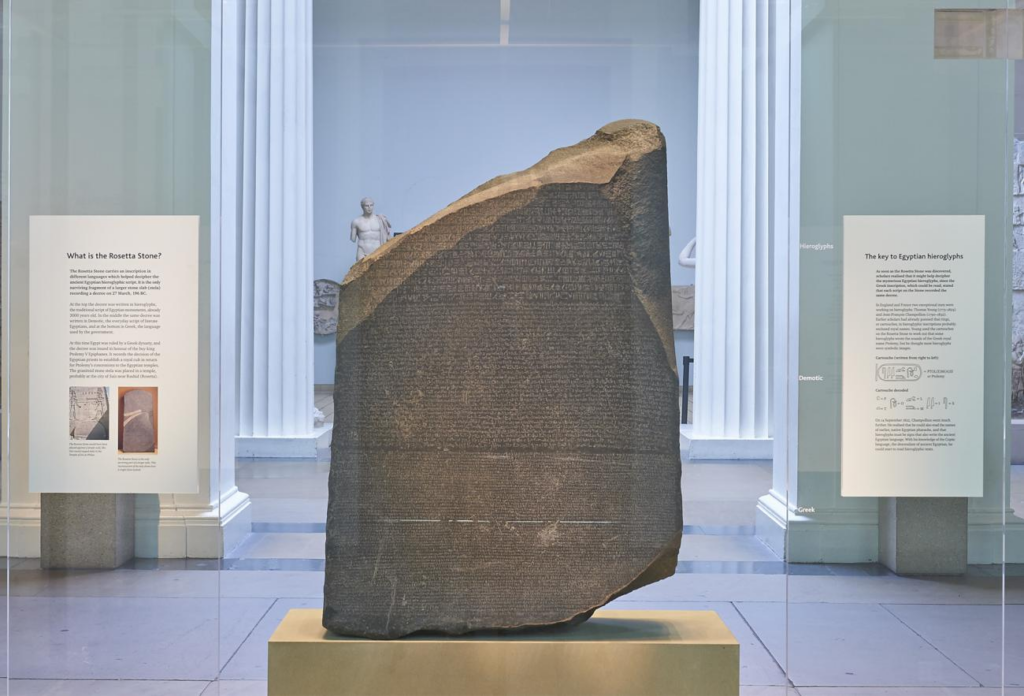For this week I decided to try exploring the British Museum in London, England. As I have never use a virtual tour before, this was a new experience for me.
Upon clicking the link for the virtual tour, I was not expecting it to drop me directly into its Egyptian Gallery, much less directly next to the Rosetta Stone. The function of this tour is very similar to Google Map Streetview, you can click and drag to move and look around, and it is possible to visit the adjoining galleries. I decided to stay in the Egyptian Gallery and focus on the Rosetta Stone itself.
The Rosetta Stone itself has a very interesting history, it is a granite slab named after the place where it was rediscovered with three seperate scripts in Heiroglyph, Demotic, and Ancient Greek. As the scripts all translate into the same text, a decree praising the Egyptian ruler at the time, the rosetta stone essentially became a kind of key that allowed historians and archiologists to read the hieroglyphs found in egyptian texts, monuments, and temples. It was discovered by accident by members of Napoleon’s military during the reconstruction of a fort nearby, before coming into the possesion of the British and moved to the British Museum where it has remained on display since 1802.
The display for the stone is quite simple, the viewer is able to see it from all sides in the virtual tour, and there are information plaques with a brief history of the Rosetta Stone itself as well as a quick information plaque on how the hieroglyphics were translated. The stone itself is in relatively good shape as it is protected in its glass case and bright light does not seem to deteriorate the stone or its inscriptions. Since the virtual tour itself is a digital media that behaves like Google Streetview, it can be assumed that occasionally the galleries will need to renew periodically as items are moved around or if there are glitches.
What interesting object surprised you when looking through a digital gallery?

I don’t think that I’ve come across anything that would surprise me, everything that I’ve ever seen, seemed kind of standard. Items like art, instruments, other kinds of paper related items and clothing seem kind of standard for me to see on museum website.
Your description of the virtual tour for the Rosetta Stone seemed like such an amazing experience. An interesting specimen that surprised me when looking through a digital gallery from the Natural History Museum is the skeleton of a Blue Whale that has been part of the museum’s collection since the 1890s. The main reason this specific digital specimen is interesting to me is because encased and wrapped around the skeletal structure of the whale’s bones are newspapers of bygone eras that could be used in modern studies in understanding historical perspectives.
Like what Arianna answered, nothing too big surprises me. However, I am fasinated how great of quality these museums can present in a digitalized format. Sometimes the digitalized media would be so detailed that even my eyes wouldn’t pick up if I saw it in person. Loved reading your post, great job!